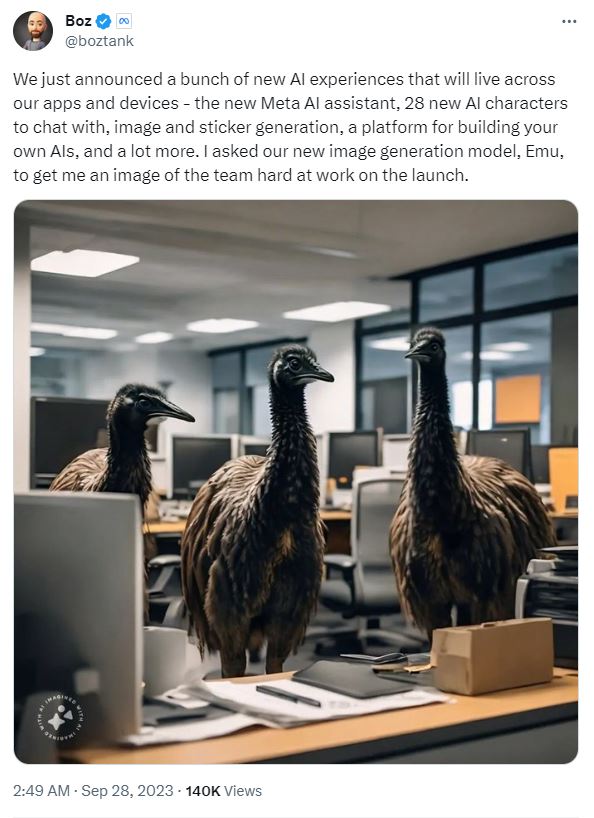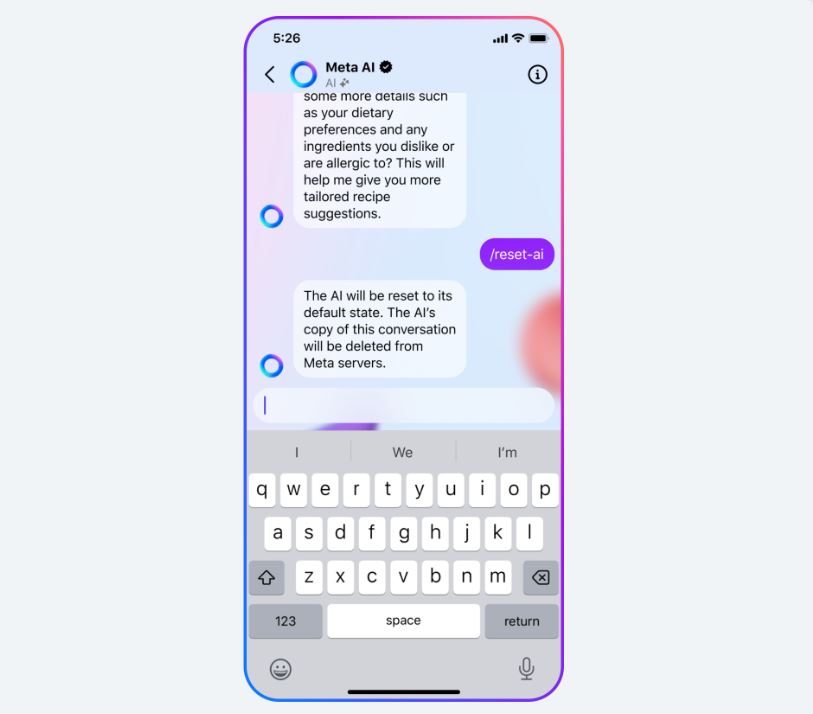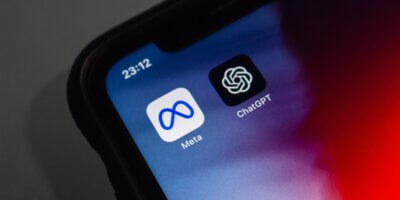
Is AI in social media really a necessity? (Image – Pexels)
Do we really need AI assistants in social media?
- After Snapchat, Meta unveils AI assistants in its social media apps.
- AI assistants can help users with suggestions after accessing their information.
- Meta confirms AI may retain and use information shared in a chat to provide more personalized responses.
Given that AI is in almost every piece of technology today, it only made sense that it would end up in social media. While some social media apps already have chatbots and automated features, generative AI in social media is supposed to bring a whole new experience to these platforms.
In fact, Snapchat can be considered one of the pioneers of AI in social media. Not only did Snapchat introduce AI to its lenses, it also allowed users to be genuinely creative in their content creation. Snapchat’s initial success led to other social media apps developing and offering similar features.
At the same time, many AI tools have been developed to boost content on social media platforms. For example, AI can create personalized content tailored to user interests or even for analyzing customer trends. Meta’s Facebook is known for using AI to understand its users, especially in curating user feeds.
Here’s are a few examples of AI-generated content tools for social media.
1) Flick – Its AI social media assistant is a marketing tool that helps users speed up the brainstorming, writing, and planning process for social media. The AI Assistant helps users generate original and engaging content ideas based on the topics entered within seconds.
2) Heyday – Bots are already a problem to deal with. Now imagine bots with AI. That’s exactly what Heyday does. It allows users to leverage AI to create content for their bots. Thankfully, Heyday is focused on boosting customer service in social media.
3) Content Studio – For businesses that need to create content but don’t have the skills that requires. Content Studio offers a simple yet powerful all-in-one social media tool for agencies, brands, and marketers to instantly create Instagram captions, Tweet ideas, inspirational quotes, rewrite content, and even generate content ideas.
Using AI assistants in social media
Using generative AI for social media and using generative AI in social media are different. Instead of using AI to generate content, some social media apps use AI as an assistant—for example, Snapchat’s My AI.
My AI is powered by OpenAI’s ChatGPT technology, with additional safety enhancements and controls unique to Snapchat. The chatbot can answer questions, offer gift advice, plan a trip, and make meal suggestions.
Snapchat’s My AI proved to be a hit with users, but the company did acknowledge that some of the responses may include biased, incorrect, harmful, or misleading content. This is because My AI is an evolving feature, and users are advised to always independently check answers provided by My AI before relying on any advice.

Meta unveils an AI assistant.
Meta’s AI assistant
Given the success of Snapchat’s My AI, Meta has also developed an AI assistant for Facebook Messenger, WhatsApp, and Instagram users, as well as on the soon-to-be-available Ray-Ban Meta smart glasses and Quest 3.
Meta AI will be an assistant powered by a custom model that leverages technology from Llama 2 and Meta’s latest large language model (LLM) research. In text-based chats, Meta AI has access to real-time information through a search partnership with Bing and offers a tool for image generation.
Apart from AI assistants, Meta will also be rolling out AI stickers across its apps, and soon, users will be able to edit images or even co-create them on Instagram using the new AI editing tools, restyle and backdrop. The company is also launching 28 more AIs in beta, with unique interests and personalities.
With businesses also looking to leverage this tool, Meta plans to make the AIs available for companies and creators in the future and will be releasing its AI studio for people and developers to build their AIs. To ensure the technology is not misused, the AI will be rolled out slowly and have built-in safeguards.

Building AI responsibly at Meta. (Source – Meta)
Does AI in social media raise privacy concerns?
As expected, AI in social media will mean the technology will need to understand user behavior to generate the best results. This will mean having the AI learn from content and user actions on its platforms for Meta. Be it Facebook, WhatsApp, or Instagram, the AI would need to learn the patterns of users to come up with the best results when prompted.
While this does raise some privacy concerns, Meta has said it’s included privacy safeguards in the new generative AI features to protect people’s information and help them understand how the features work. The generative AI features also undergo a rigorous internal privacy review that ensures user data is used responsibly while building better experiences for connection and expression.
According to Mike Clark, director of product management at Meta, the company is also launching a generative AI privacy guide and other transparency resources for users to understand how it built its AI models, how the AI features work, and what controls and data privacy rights users have.
Clark explained that the generative AI models take a large amount of data to effectively train, so a combination of sources is used for training, including publicly available online, licensed data and information from Meta’s products and services.
“For publicly available online information, we filtered the dataset to exclude certain websites that commonly share personal information. Publicly shared posts from Instagram and Facebook – including photos and text – were part of the data used to train the generative AI models underlying the features we announced at Connect. We didn’t train these models using people’s private posts. We also do not use the content of your private messages with friends and family to train our AIs. We may use the data from your use of AI stickers, such as your searches for a sticker to use in a chat, to improve our AI sticker models,” said Clark.
Clark also mentioned that the AIs may retain and use information shared in a chat to provide more personalized responses or relevant information in that conversation, and Meta may share specific questions users ask with trusted partners, such as search providers, to give more relevant, accurate, and up-to-date responses.
“To give you more control, we’ve built in commands that allow you to delete information shared in any chat with an AI across Messenger, Instagram, or WhatsApp. For example, you can delete your AI messages by typing “/reset-ai” in a conversation. Using a generative AI feature provided by Meta does not link your WhatsApp account information to your account information on Facebook, Instagram, or any other apps provided by Meta,” added Clark.

Users can can delete AI messages by typing “/reset-ai” in a conversation. (Image – Meta)
Are AI assistants really necessary?
Here’s the thing. While generative AI in the workplace has been seeing increased adoption, the technology seems to make sense to implement in that environment. AI assistants let organizations focus on more important work as they automate most processes and can complete mundane workloads.
In fact, tech companies have unveiled various generative AI tools in the workplace, each catering to specific use cases for multiple industries. A recent Gartner poll of more than 1,400 executives found that 45% reported that they are in piloting mode with generative AI, and another 10% have put generative AI solutions into production. This is a significant increase from a Gartner poll conducted in March and April 2023, in which only 15% of respondents were piloting generative AI and 4% were in production.
The poll found that 45% of enterprises are scaling generative AI investments across multiple business functions, with 22% scaling across more than three different functions. Software development is the function with the highest rate of adoption or investment in generative AI, followed closely by marketing and customer service.
Meanwhile, for AI assistants in social media, the need can be subject to what users plan to do with it. When Mark Zuckerberg unveiled Meta’s new AI assistant in a video (above), he requested the AI prepare a dinner for his family. But do we need an AI assistant to help us decide this?
Sure, it takes away some folks’ burden of searching for a solution, but does this also mean that we are becoming too dependent on AI to do our thinking for us?
While the technology does not make the decision, making suggestions limits the choices users have on what they want to do. For example, asking an AI assistant to plan dinner based on what ingredients are available at home would mean removing the creativity users have exercised in thinking of something better.
We’re in an era where getting personalized suggestions from an AI assistant that uses a celebrity’s voice is becoming a better option than spending a few more minutes using our thinking skills to solve a problem.
Meta and Snapchat’s AI assistants in social media are examples of how reliant humans could eventually become on technology.
READ MORE
- Safer Automation: How Sophic and Firmus Succeeded in Malaysia with MDEC’s Support
- Privilege granted, not gained: Intelligent authorization for enhanced infrastructure productivity
- Low-Code produces the Proof-of-Possibilities
- New Wearables Enable Staff to Work Faster and Safer
- Experts weigh in on Oracle’s departure from adland




